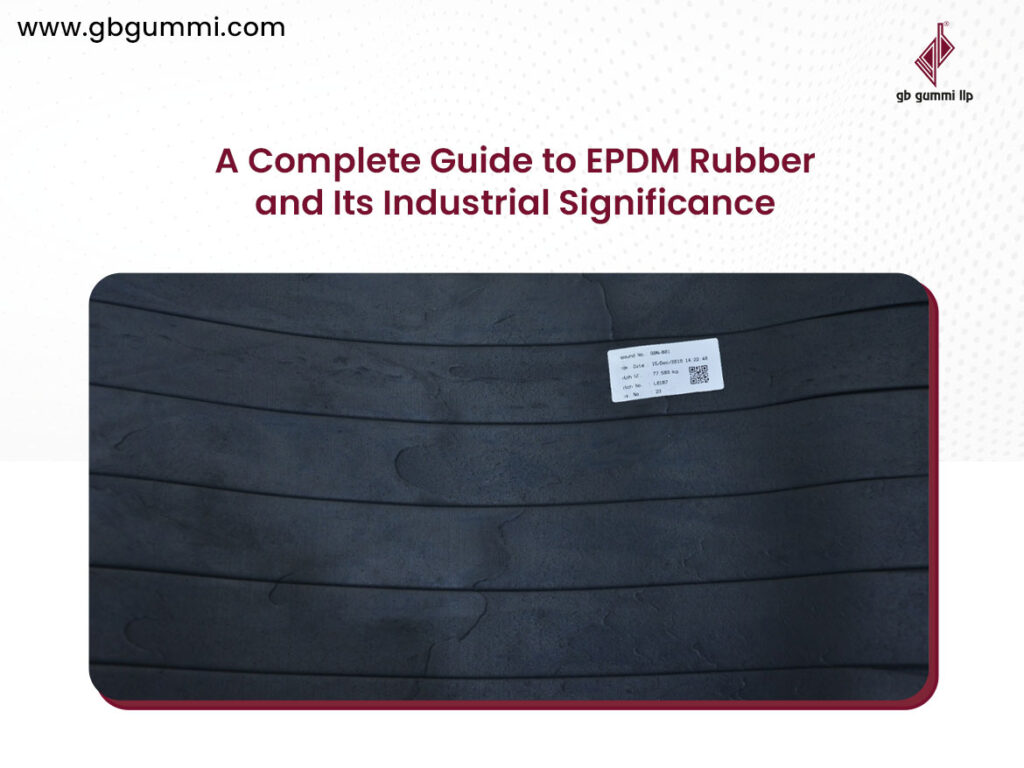EPDM Rubber (Ethylene Propylene Diene Monomer)
EPDM rubber (Ethylene Propylene Diene Monomer) is a high-quality synthetic elastomer, known for its well-established performance and durability against environmental stresses. Since its initial formulation in the 1960s, EPDM has gained wide popularity as one of the most utilized rubber formulations due to its reliable heat stability, ozone, ultraviolet and weather-resistant properties, and its unique flexibility in both hot and cold conditions.
Properties of EPDM Rubber
EPDM rubber is designed to have an outstanding performance regardless of the demanding conditions. Some of the defining properties include:
- Excellent Weather Resistance – Is quite resistant to ozone, sunlight, and severe weather
- Service Temperature Range – Is able to operate in an enormous range of -40°C up to +120°C with good performance under both cold and heat
- Elasticity & Flexibility – Retains its shape, growth, and other characteristics, even when under load for extended periods of time
- Chemical Resistance – Works well against water, steam, mild acids and alkalis
- Longevity – Has the potential to last for dozens of years inside construction and industrial products
Uses of EPDM Rubber
1. Constructions & roofing
EPDM membranes are often used for flat and low-slope roofing systems because they are lightweight, durable, and energy efficient. EPDM membranes are long-lasting in waterproofing buildings and can be installed quickly; they are also cheaper to maintain than other systems.
2. Automotive
Automakers depend on EPDM hot and cold seals, weatherstrip, hoses, and belts. EPDM rubber is heat, ozone, and moisture resistant, allowing it to withstand severe environmental conditions and maintain performance in a variety of automotive applications.
3. Electrical and mechanical uses
EPDM is used as an insulator for cables and gaskets, therefore its good insulation properties allow EPDM to be a flexible, reliable, safe solution for the electrical and industrial equipment industries.
4. General industrial
EPDM is often used in tubing, flooring, playscapres, and sealants to exemplify the versatility of EPDM and its adaptability to different sectors.
Advantages of EPDM Rubber:
- Durability and Longevity – able to withstand cracking, aging and harsh weather systems.
- Environmentally-Friendly – is recyclable and energy-efficient, especially when used in roofing.
- Cost-Effective – has a lower lifetime cost, while providing great performance.
- Energy Efficiency – EPDM roofing resists sunlight and helps keep the temperatures regulated in the building.
- Versatile – can be used in construction, automotive, electrical, and general industrial applications.
Disadvantages of EPDM Rubber:
EPDM rubber can be quite versatile, it does have a couple limitations:
- Weak resistance to oils, fuels, and some solvents.
- Lower tensile strength to rubbers such as nitrile or silicone.
- May require additional processing for specially tailored applications
Why Use EPDM Rubber?
The unique combination of durability, flexibility, and cost-effectiveness makes EPDM one of the most widely used rubber materials in the world. From roofing and automotive to insulating gaskets, EPDM rubber proves its worth across applications and the reason its demand remains high.
At GB Gummi, we pride ourselves on providing top end EPDM rubber solutions for changing industrial needs to give you long-term performance and reliability.
Conclusion
EPDM rubber has established itself as one of the best overall choices when it comes to a durable, versatile synthetic rubber. With documented applications in the construction, automotive, electrical, and industrial product areas, it provides businesses with a cost effective and sustainable solution.
For customized EPDM rubber solution, contact GB Gummi today.

